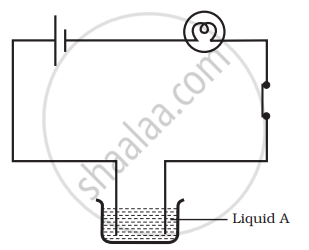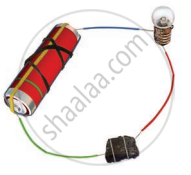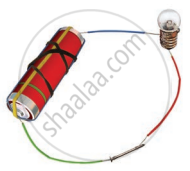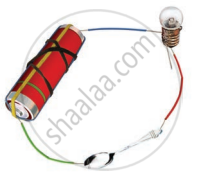Advertisements
Advertisements
Question
The process of depositing a layer of any desired metal on another material by means of electricity is called ______.
Solution
The process of depositing a layer of any desired metal on another material by means of electricity is called electroplating.
Explanation:
It is one of the most common applications of the chemical effects of electric current. Electroplating is a very useful process. It is widely used in the industry to coat metal objects with a thin layer of a different metal.
APPEARS IN
RELATED QUESTIONS
If you pass current through copper sulphate solution, copper gets deposited on the plate connected to the ______ terminal of the battery.
The object to be electroplated is taken as ______ electrode.
Electroplating of ______ is done on objects like water taps and cycle bell to give them a shiny appearance.
Paheli set up an experiment using liquid A in the beaker as shown in the figure. She observed that the bulb glows. Then, she replaced the liquid A by another liquid B. This time the bulb did not glow. Boojho suggested replacing the bulb by an LED. They observed that the LED glows. Explain.

Paheli wants to deposit silver on an iron spoon. She took silver nitrate (AgNO3) solution in a beaker and set up a simple circuit for electroplating. Which terminal of the battery should the spoon be connected to? What material should the other electrode be made of?
Observe the following circuits carefully. In which circuit will the bulb glow? Write Yes or No in the blank space provided along each of the circuit given in the figure.
|
(a) |
Piece of coal |
______ |
|
(b) |
Iron nail |
______ |
|
(c) |
Eraser |
______ |
|
(d) |
Steel spoon |
______ |
You are provided with a magnetic compass, an empty matchbox, a battery of two cells and connecting wires. Using these objects, how will you make a tester for testing an electric circuit? Draw the necessary circuit diagram and explain.
A chemical reaction happens when electricity passes through various conducting liquids.
Match the following
| 1. | Anode | a. | Conducting solution |
| 2. | Cathode | b. | Positive terminal |
| 3. | Ions | c. | Negative terminal |
| 4. | Electrolyte | d. | Positively or negatively charged |
Name the process which shows the chemical effect of electric current?




